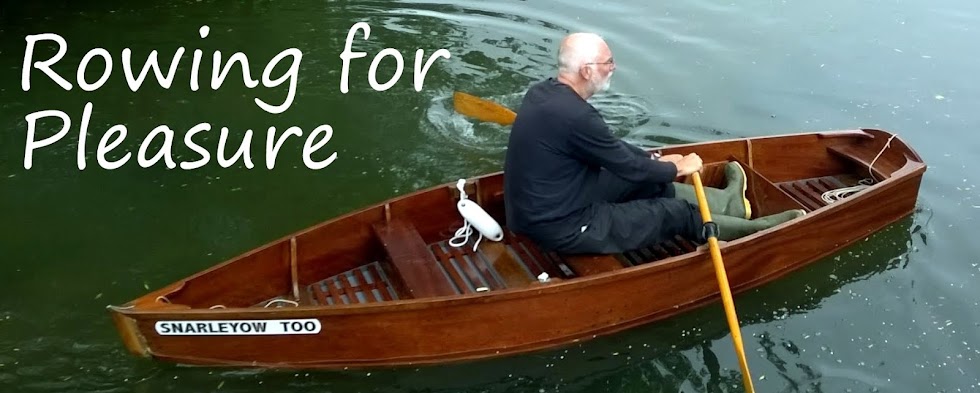 One of the big things that stops people getting into rowing is not being able to see where they are going, and inventors have been wrestling with the problem for 150 years at least.
One of the big things that stops people getting into rowing is not being able to see where they are going, and inventors have been wrestling with the problem for 150 years at least.One of the most popular approaches is the bow-facing oar or articulated oar. It consists of a handle and a shaft linked by a crank so when you pull on the handle the blade shaft moves in the opposite direction.
The mechanism is said to have been originally devised back in 1884 by a fisherman called Fred Allen of Monmouth, Illinois, but Larsen's US patent of 1923 shows the principle.
Articulated oars were popular in the first half of the 20th century for duck punts, because hunters need to see their quarry as they stalk it, but they could not transmit enough power and the metals tended to corrode badly so they never moved into the mainstream.
Recently, however, a number of updated versions have come on the market using new, stronger stainless steels and computer design software so the power is transmitted more smoothly.

The Gig Harbor Boatworks unit, for example, is a nice looking stainless steel mechanism that looks the part, and the EZ Row is made of aluminium and plastic that reduces the price considerably. If you want to make one yourself, Australian designer Rob Bruce sells plans for a simple mechanism made of bent galvanised bar.
The drawbacks of articulated oars remain the same, however. They are very expensive, complex and less efficient than regular oars. And you can't feather them. But they certainly fascinate with their weird back-to-front action - take a look at the EZ-Row in action and you will see what I mean.

3 comments:
Rob Bruce is no longer available.
Thanks, A. Non - the link is indeed dead. Just have to buy them ready-made, then.
Chris
I saw these kind of oars for the first time ever in a movie the other night -- "U.S. Marshalls". They were being used in a swamp/bayou. Kinda cool!
Thanks for the explanation! :-)
Post a Comment